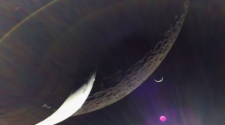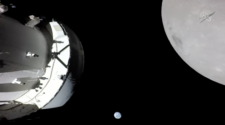
Culminating years of design effort, NASA Administrator Jim Bridenstine unveiled a pair of hi-tech spacesuits to be worn by the first woman and the next man who will journey to the Moon in Orion capsules and walk on the lunar South Pole – during a rousing event held Tuesday, Oct. 15, at NASA Headquarters in Washington, D.C.
“We need Artemis generation spacesuits,” said Bridenstine to open the event showing prototypes of the new spacesuits to be worn by NASA astronauts as they explore the Moon as part of the agency’s Project Artemis.
Bridenstine and spacesuit engineer Amy Ross introduced the two new prototype suits – the Exploration Extravehicular Mobility Unit (xEMU) and the Orion Crew Survival System suit – in a splashy affair as two more engineers wearing the advanced spacesuits walked onto the stage to loud cheers and palpable excitement from the packed auditorium and then set about to demonstrate and explain in some detail the functions and capabilities of the suits.
“We are going to the Moon by 2024 and we want it to be sustainable so we can stay at the Moon for long periods of time by 2028,” stated NASA in a press release. “So we will have the Gateway in orbit around the Moon that will serve as a permanent and reusable command module around the Moon. Ultimately the goal is this – We’re going to Mars. And in order to go to Mars, we have to use the Moon as a proving ground. We have to learn how to live and work on the surface of another world for long periods of time. To do that we need spacesuits.”

The NASA HQ auditorium event was attended by officials, news media and a large crowd of school students who could be inspired to study hard and perhaps one day journey into deep space.
The two new spacesuits are designed for NASA’s new Artemis Moon to Mars exploration program. One is for launch and reentry in the Orion deep space capsule. It is named the Orion Crew Survival System suit. The other suit is for exploration activities on the lunar surface. It is named the xEMU or Exploration Extravehicular Mobility Unit suit.
“These are our spacesuits for the Artemis generation,” Bridenstine announced to the crowd as two engineers – one woman and one man, Kristine Davis and Dustin Gohmert, both from NASA’s Johnson Space Center – walked onto the stage wearing the two prototype suits to exuberant cheering.
Unliked previous spacesuits, these ones are designed to fit everyone regardless of shape, gender or size – because they are highly flexible and modular and thus upgradable to incorporate new technological advances.
“Kristine is wearing a spacesuit that will fit all of our astronauts when we go to the Moon,” Bridenstine said as he introduced Davis wearing a red, white and blue xEMU prototype suit, followed by Gohmert in a bright orange suit reminiscent of Space Shuttle flightsuits from which it is derived with significant enhancements.
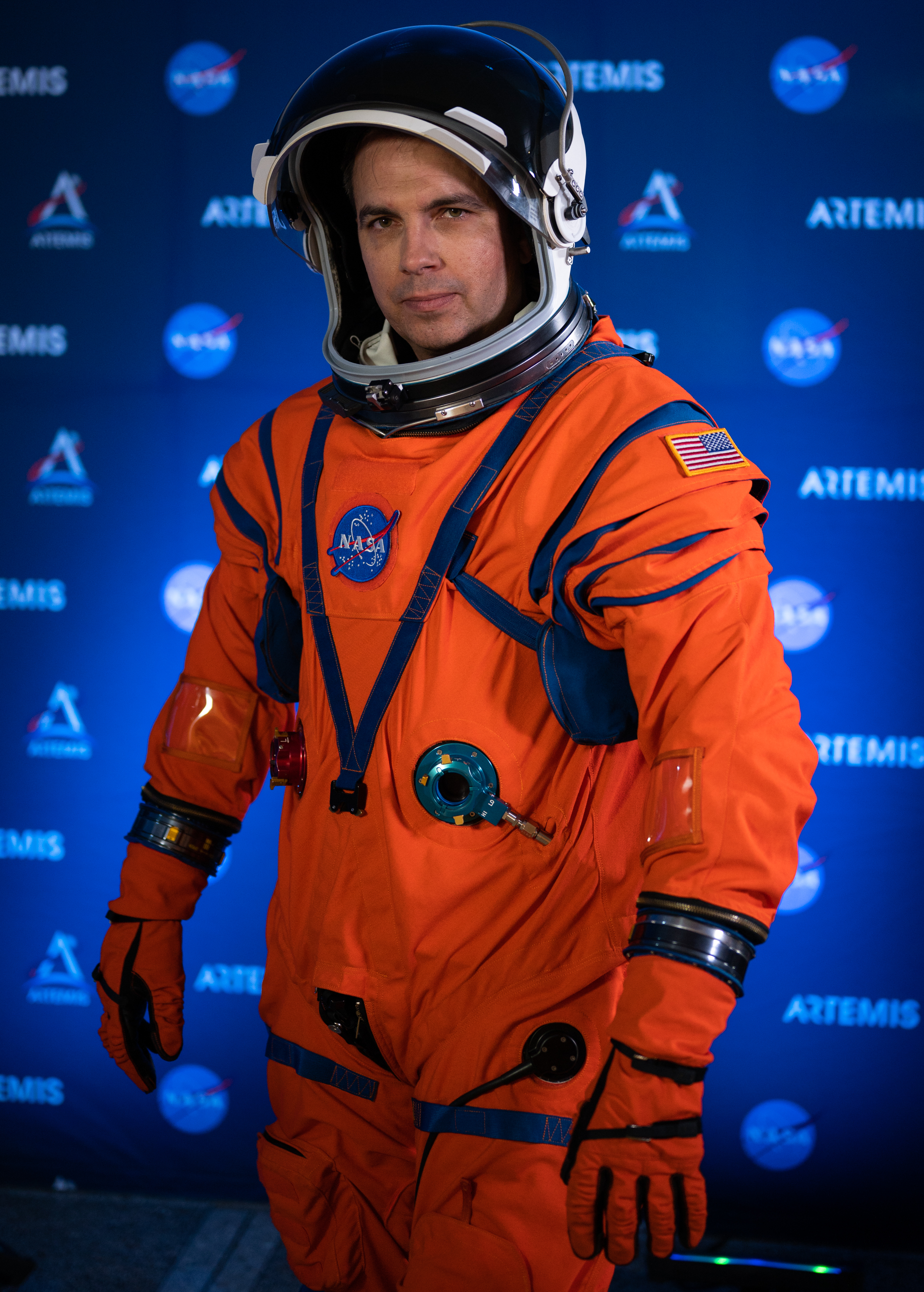
“Dustin Gohmert is wearing the suit astronauts will wear traveling on the way to the vicinity of the Moon.”
The astronauts will fly aboard the Orion crew capsule that will launch to the Moon bolted atop NASA’s mammoth Space Launch System (SLS) super heavy-lift rocket from Launch Complex 39B at the Kennedy Space Center (KSC) in Florida.
The SLS rocket for Artemis 1 is currently under construction at the Michoud Assembly Facility in New Orleans. Meanwhile, Orion is being completed in the Operations and Checkout Building at KSC.
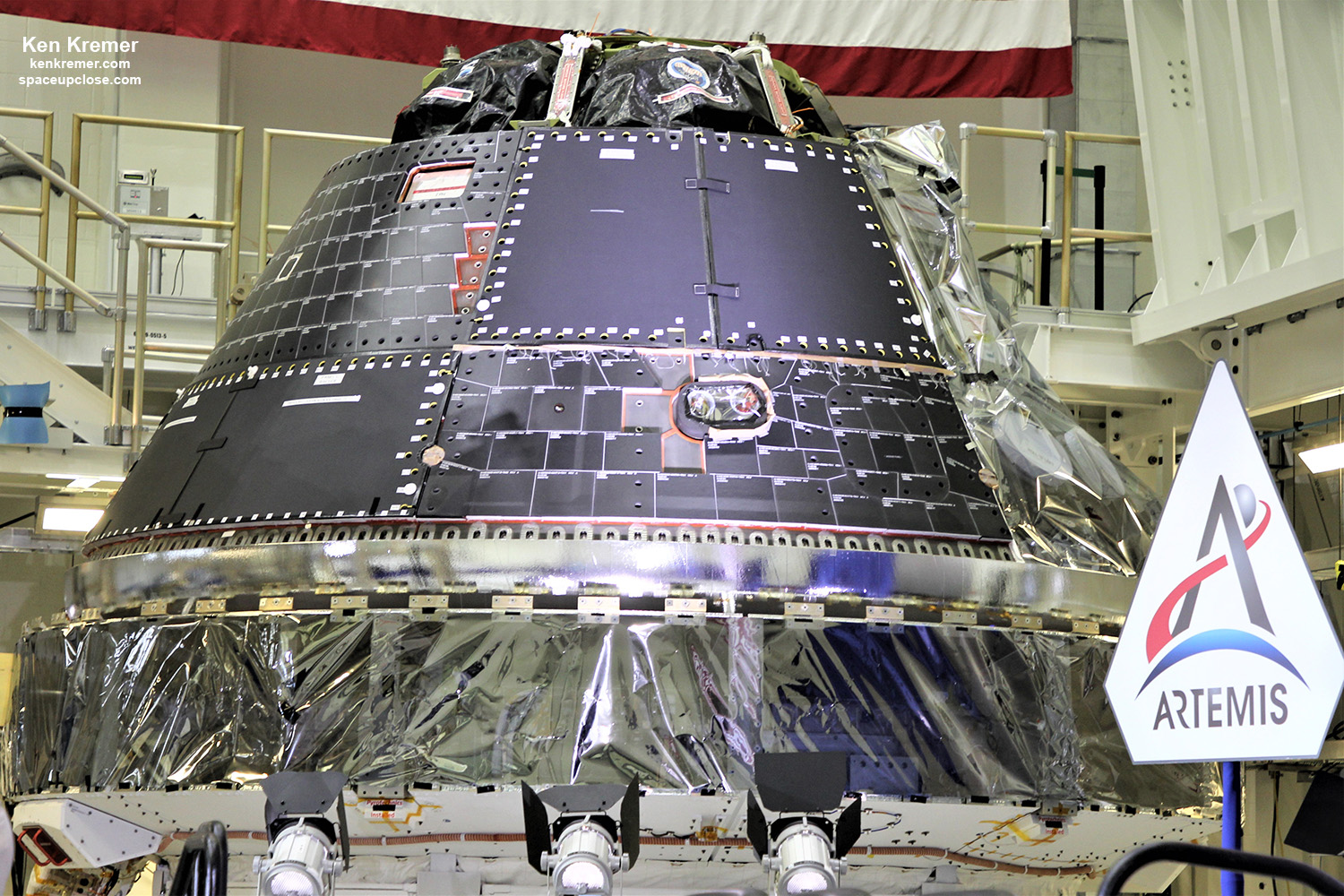
The new xEMU lunar suits are much more flexible and capable compared to NASA’s Apollo suits from the 1960s and 1970s. The agency has been working on them for several years, even before the new Artemis moon landing program was first announced by Vice President Pence earlier this year.
The spacesuits must also protect astronauts from the harsh environment of the Moon, including radiation, micrometeoroids, and withstanding temperature extremes ranging from -250 degrees F in the shade to +250 degrees F in the Sun in near vacuum – while maintaining a pressure of about 8 psi.
“We’ve been working for a long time to build spacesuits that will do the job on the Moon and going on to Mars,” said Ross. “My job is to take a basketball, shape it like a human, keep them alive in a harsh environment, and give them the mobility to do their job.”
The xEMU suit improves on the suits previously worn during the Apollo era and those currently worn during spacewalks outside the International Space Station (ISS), says NASA.
Watch this short NASA video describing the xEMU lunar exploration suit and the Orion launch and reentry suit:
The xEMU shown at NASA HQ was a prototype. Teams will now build two additional suits that likely be tested on the ISS by 2023 or earlier, according to spacesuit engineer Chris Hansen, NASA JSC EVA manager.
Then they will be carried to the lunar south pole surface on the Artemis 3 mission, tentatively slated for 2024.
These initial lunar surface exploration suits are being built in-house by NASA. However, NASA is seeking to have commercial companies build the final spacesuits. Over time, they should evolve and be upgraded with new technologies.
The astronauts will be able to work for about eight hours on the surface under a 100% pure oxygen atmosphere with advanced scrubbers for continuous carbon dioxide removal. They are designed to prevent decompression sickness such as the ‘bends.’
The greater danger to the astronauts is the sharp-edged lunar soil that’s “composed of tiny glass-like shards. The new suit has a suite of dust-tolerant features to prevent inhalation or contamination of the suit’s life support system or other spacecraft,” according to NASA.
The Portable Life Support System is the familiar backpack astronauts wear on spacewalks that houses the suit’s power and breathable air and removes exhaled carbon dioxide and other toxic gasses, odors and moisture from the suit. It also helps regulate temperature and monitors overall suit performance, emitting warnings if resources fall low, or if there is a system failure. Miniaturization of electronics and plumbing systems have made it possible to build in duplicates for much of the system, making some failures less of a concern. The duplication also increases safety and could increase spacewalk duration.
The primary components of the pressure garment are the upper torso, helmet, lower torso and cooling garment.
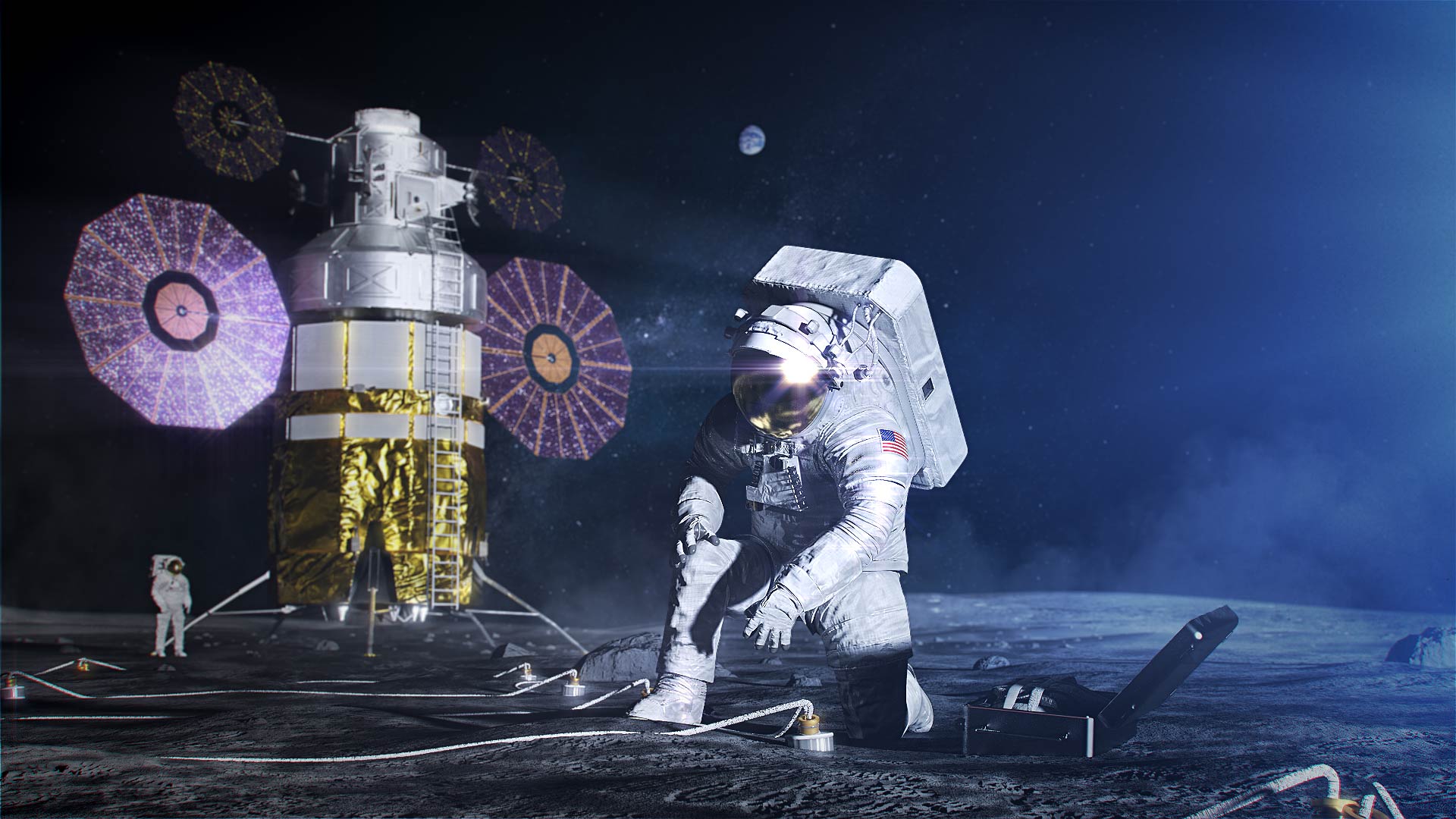
The new lower torso includes advanced materials and joint bearings that allow bending and rotating at the hips, increased bending at the knees, and hiking-style boots with flexible soles. On the upper torso, In addition to the updated shoulder placement, other shoulder enhancements allow astronauts to move their arms more freely and easily lift objects over their heads or reach across their body in the pressurized suit. Apollo shoulder mobility was enabled by pleats in the fabric with cable pulleys that provided mechanical advantage to move the shoulders up and down but limited the ability to rotate the joint. The new shoulders minimize the effort required for full mobility and include bearings that allow full rotation of the arm from shoulder to wrist.
Launch of the first integrated SLS rocket and Orion deep-space crew capsule is expected no earlier than late 2020 from pad 39B.
Operations by the Explorations Ground Systems team are in full swing at KSC to ready launch pad 39B and test the core stage pathfinder inside the VAB.
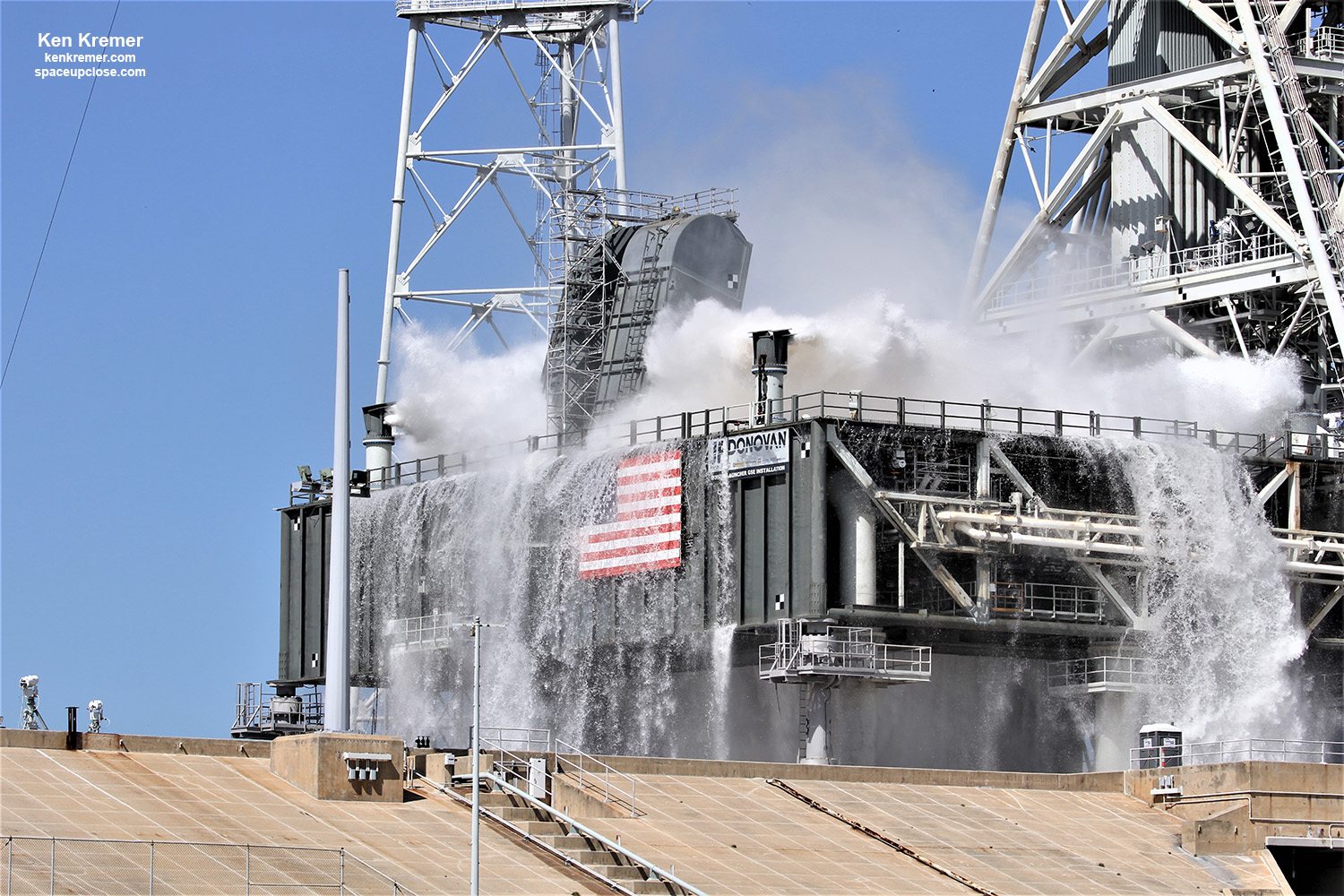
Just days ago on Oct. 12 the EGS team conducted the final wet flow, water test of the sound suppression system at Launchpad 39B to ensure it protects the pad infrastructure and SLS rocket from the tremendous sound, thermal and pressure extremes of a real launch generating some 8.4 million pounds of liftoff thrust.
Then on Oct. 16 and 17 the EGS team practiced hoisting the SLS core stage Pathfinder using two cranes from horizontal to vertical inside the Vehicle Assembly Building (VAB) and moving it into High Bay 3 where the entire SLS rocket will be assembled in future years.
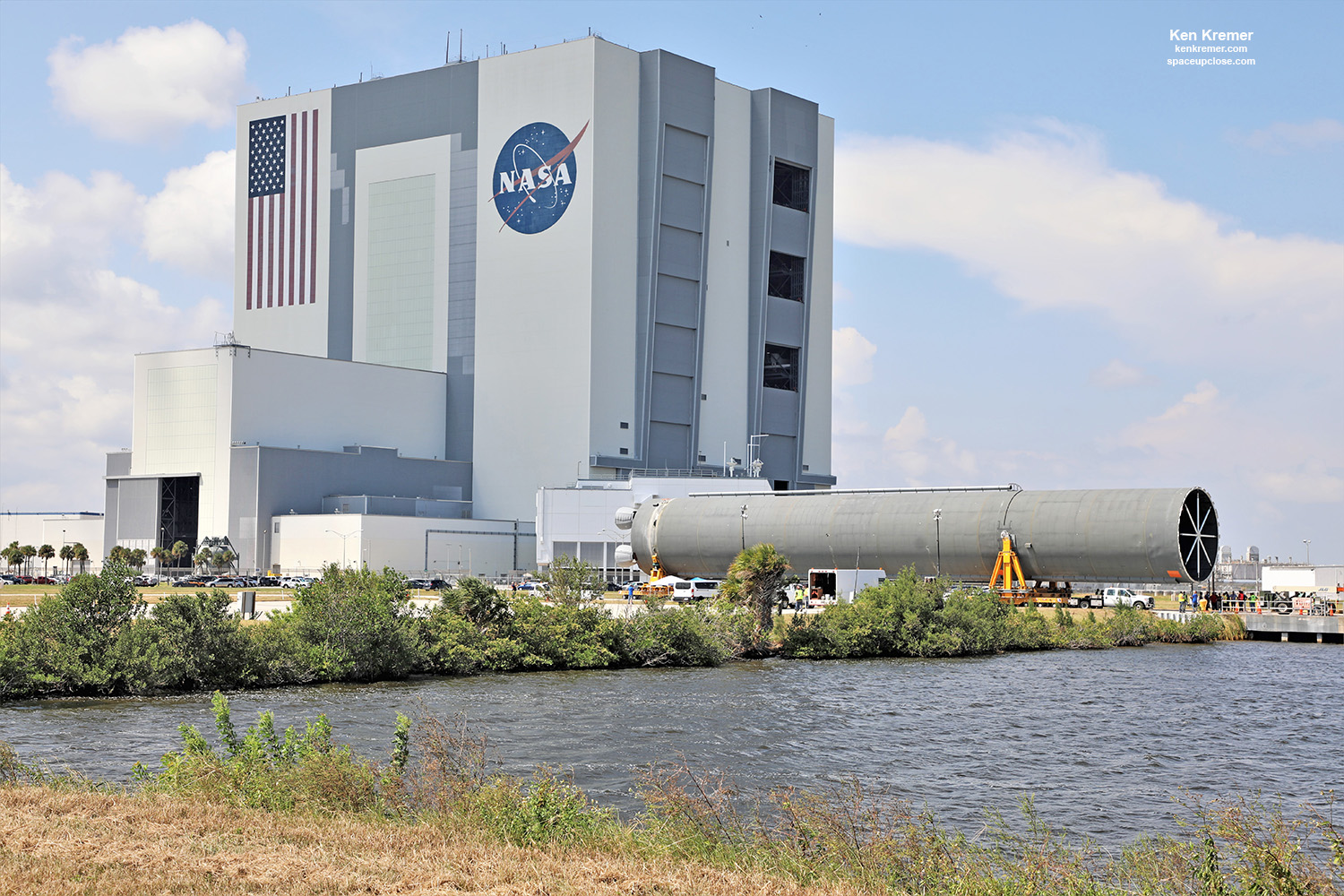
You can watch the entire NASA HQ program from Oct. 15, 2019 with NASA Administrator Jim Bridenstine here:

